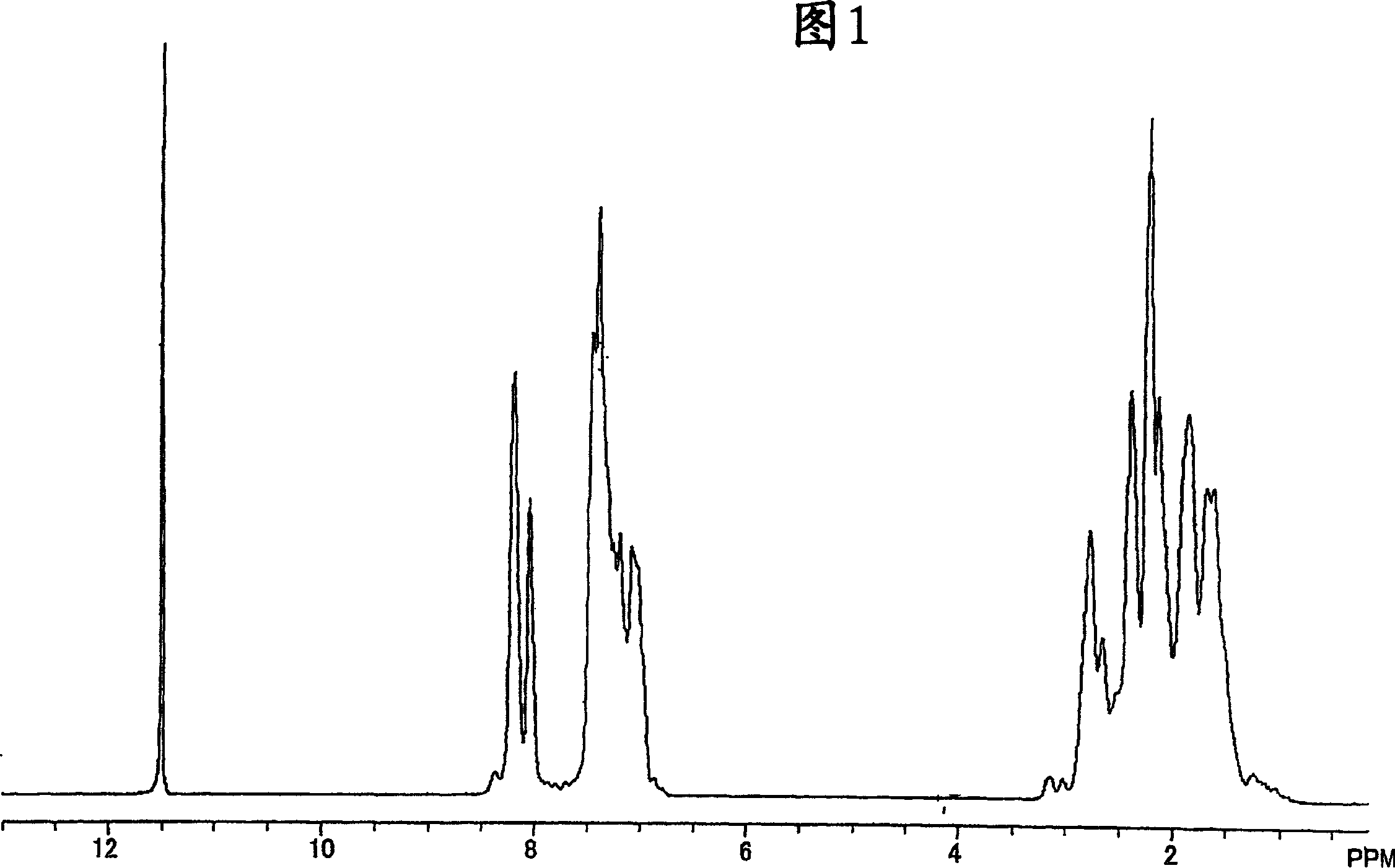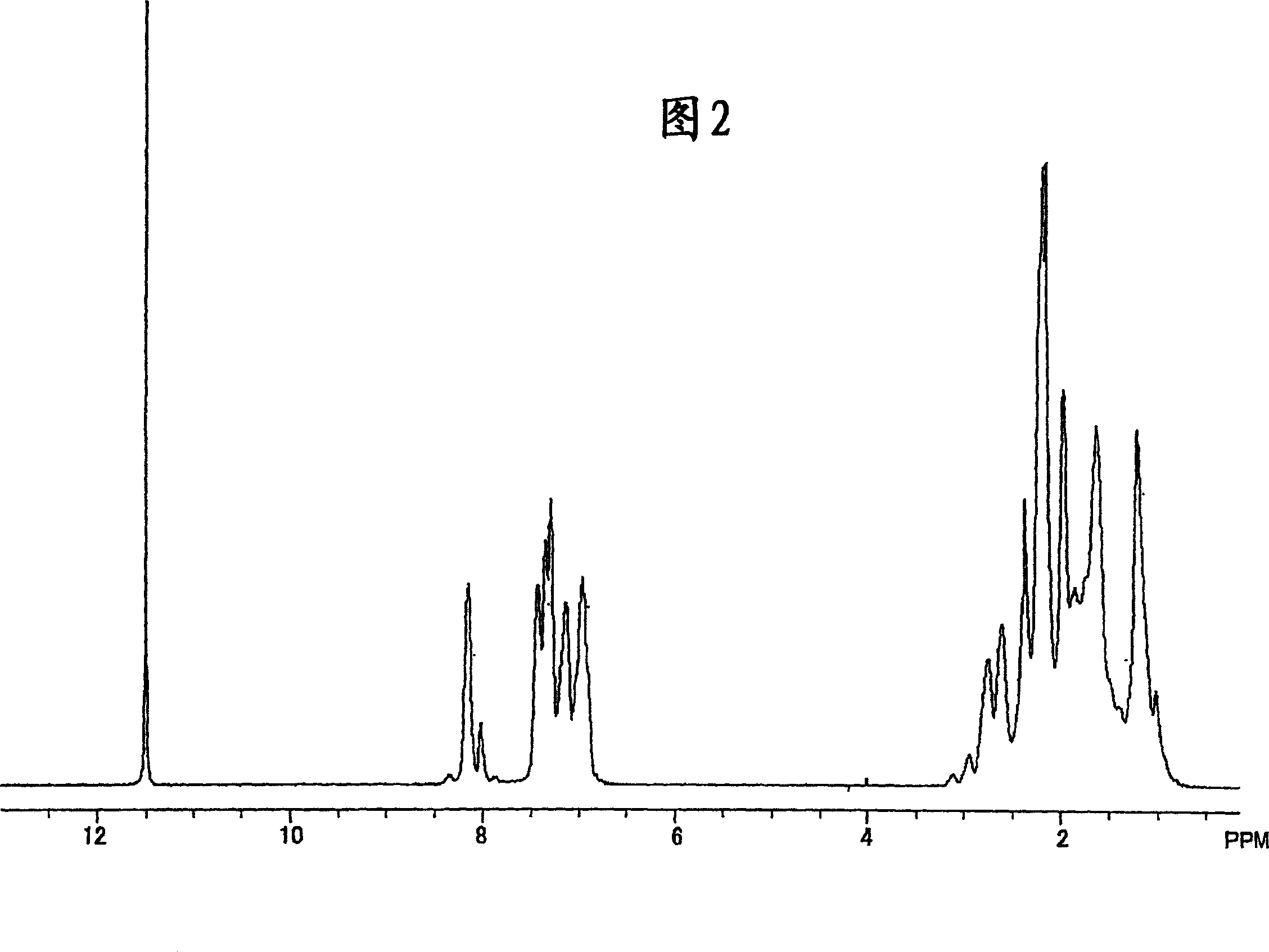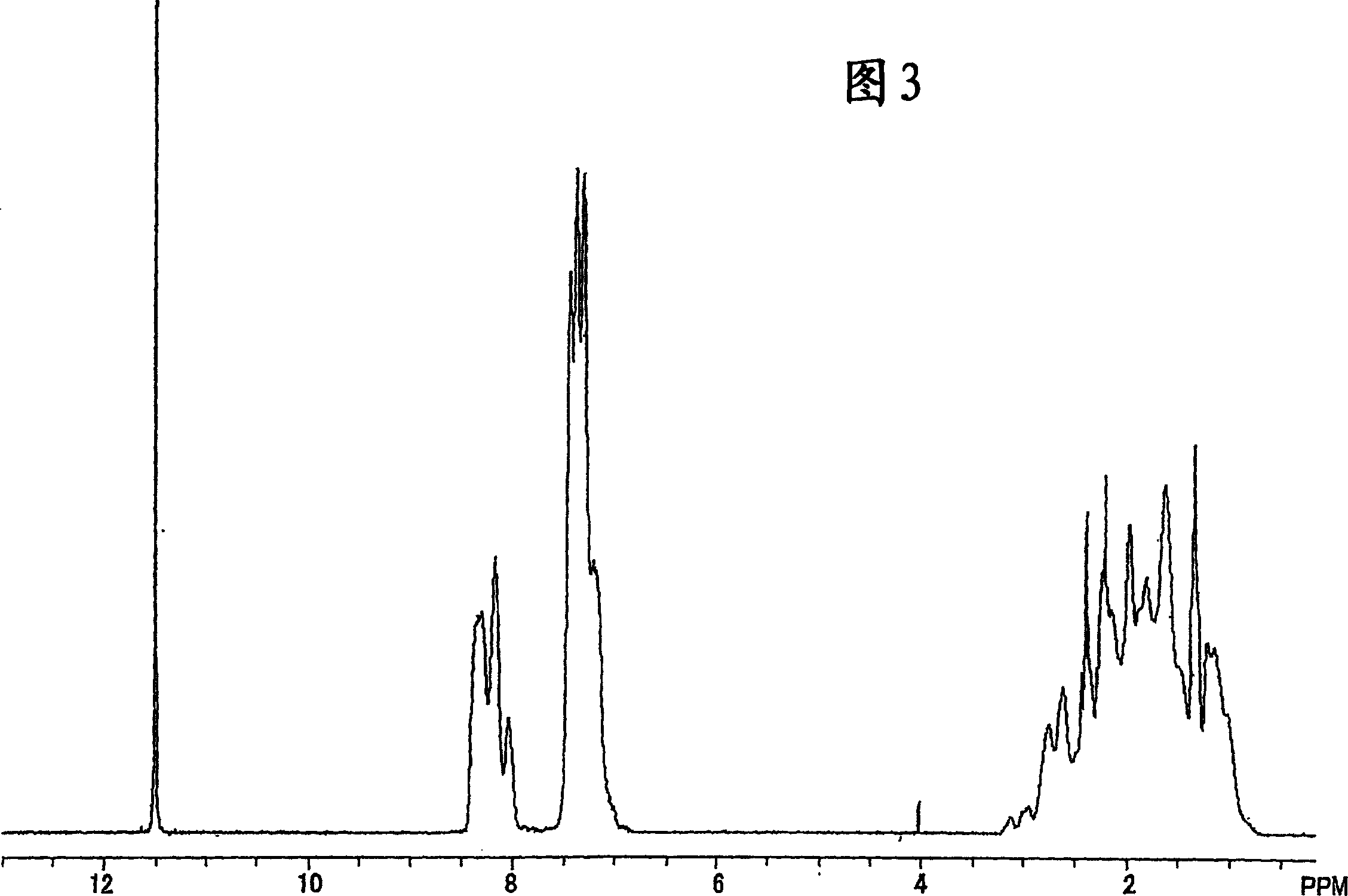Optical film and liquid crystal display device
A technology of liquid crystal display elements and optical films, applied in optics, polarizing elements, nonlinear optics, etc., can solve problems such as no reference, wavelength dispersion, etc.
- Summary
- Abstract
- Description
- Claims
- Application Information
AI Technical Summary
Problems solved by technology
Method used
Image
Examples
Embodiment 1
[0129] Put 100mmol of 4-(4-carboxycyclohexyl) benzoic acid, 50mmol of methylhydroquinone diacetate and 50mmol of catechol diacetate in a 200ml flask with a cooling tube for the outflow of acetic acid, under nitrogen flow, 6 hours at 270°C, followed by deacetate polymerization at this temperature for 2 hours under a nitrogen flow of 30 ml / min. The obtained polymer was dissolved in tetrachloroethane, and a large amount of methanol was added to refine the polymer. The polyester has an intrinsic viscosity of 0.18 dL / g, has a nematic phase as a liquid crystal phase, has an isotropic phase-liquid crystal phase transition temperature of 300°C or higher, and a glass transition point of 115°C. Figure 1 shows 1 H-NMR spectrum. In addition, as a result of observation with a polarizing microscope, it was found that the liquid crystal phase orientation of the nematic phase is completely fixed below the glass transition temperature.
[0130] Next, an 8% by weight phenol / tetrachloroethane...
Embodiment 2~16 and comparative example 1
[0132] The research was carried out in the same manner as in Example 1, except that the types of monomers and the addition ratio were changed. The results are shown in Table 1. In addition, the polymer of Example 2 1 H-NMR spectrum is shown in Fig. 2, the polymkeric substance of embodiment 7 1 The H-NMR spectrum is shown in FIG. 3 . All of these polyesters exhibited a uniform nematic liquid crystal phase above the glass transition temperature, and no transition of the nematic crystal phase was confirmed even when cooled to below the glass transition temperature, and the orientation state formed in the nematic liquid crystal phase was fixed.
Embodiment 17
[0134]An 8% by weight phenol / tetrachloroethane (60 / 40 weight ratio) mixed solvent solution of the polyester obtained in Example 7 was prepared. This solution was spin-coated on plain glass, and dried on a hot plate at 55°C for 20 minutes. After heat-treating in a clean oven at 220° C. for 20 minutes, it was taken out from the clean oven and cooled in natural air to obtain an optical film in which the orientation state of the nematic phase was fixed. The resulting optical film was transparent and free from orientation defects. As a result of observing the optical film under a crossed Nicol, no in-plane retardation was observed when viewed from the front, but a retardation occurred when viewed obliquely. As a result of interferometer observation with a polarizing microscope, a cross shape was observed, and as a result of observation with a 1 / 4 wavelength plate inserted, the second and fourth quadrants were observed to be black. From the above results, it can be seen that the h...
PUM
| Property | Measurement | Unit |
|---|---|---|
| thickness | aaaaa | aaaaa |
| glass transition temperature | aaaaa | aaaaa |
| glass transition temperature | aaaaa | aaaaa |
Abstract
Description
Claims
Application Information
 Login to View More
Login to View More - R&D
- Intellectual Property
- Life Sciences
- Materials
- Tech Scout
- Unparalleled Data Quality
- Higher Quality Content
- 60% Fewer Hallucinations
Browse by: Latest US Patents, China's latest patents, Technical Efficacy Thesaurus, Application Domain, Technology Topic, Popular Technical Reports.
© 2025 PatSnap. All rights reserved.Legal|Privacy policy|Modern Slavery Act Transparency Statement|Sitemap|About US| Contact US: help@patsnap.com



